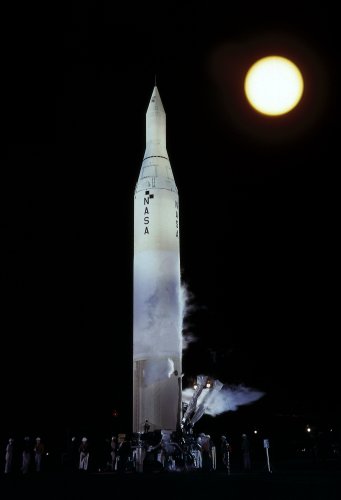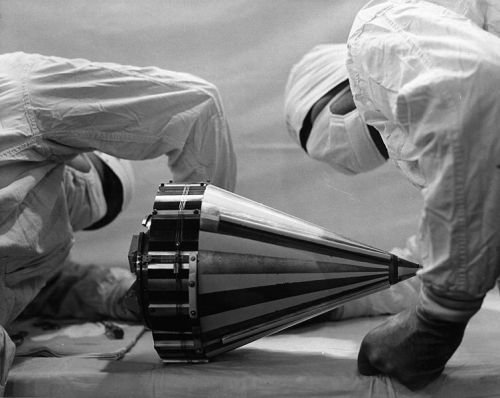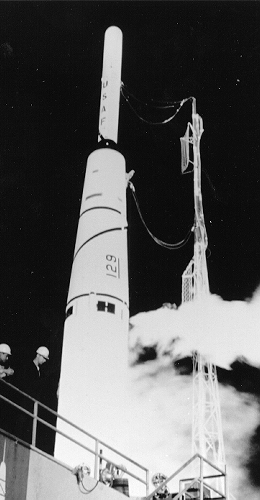
In any nascent endeavor, it is human nature to trumpet even the most modest of achievements. Sure, Pioneer I didn't make it to the moon, but it went pretty high and confirmed the Van Allen Belts. Sure, Vanguard I was the size of a grapefruit, but it taught us that the Earth is pear-shaped.
In that vein, sure, Pioneer IV, NASA's latest moon shot, may not have been entirely a success, but at least it will be the first (American) probe to sail beyond our planet's celestial companion and into solar orbit.
Launched yesterday on a Juno II, Pioneer IV is essentially an exact duplicate of the less-successful Pioneer III, with a little extra shielding around one of its charged particle detectors to better measure cosmic radiation. In the tradition of focusing on the positive, I will note that Pioneer IV's mission is not just to take snapshots of the moon, but to duplicate the mission profile of its predecessor so as to provide a comparative data set. This is the soul of science–the repeating and repeatability of experiments.

As far as the trip to the moon is concerned, there have only been a couple of minor hiccoughs: one of the three scaling factor taps on one of the counters got knocked out when Pioneer IV's engines shook it a bit too roughly. In English, a scaling factor allows scientists to convert the raw voltages, recorded when charged particles hit the spacecraft, into usable numbers. I don't think this critically damages the instrument. Pioneer IV's transmission also went on the fritz for about 30 seconds while the craft traversed Earth's outer radiation belt.
While we're on the topic of problems, it looks like the little spacecraft is going to pass wide of its target, missing the surface of the moon by some 37,000 miles. This is too far to activate the photoelectric sensors on the spacecraft, which would have been used to activate a camera–if the probe had been heavy enough include a camera! Not a huge loss.
What will really be exciting is to finally give the Jet Propulsion Laboratory's deep space tracking network a full run through its paces. We've never tried to monitor a spacecraft several hundred thousand miles from Earth before. On the other hand, if the Soviets can do it, I suspect we can, too.
So there you have it. We launched a probe that weighed sixty times less than Luna I and which missed its target by a distance ten times greater. And we did it two months after Luna I.
A success? You be the judge…
P.S. Following up on Discoverer I, the Air Force is claiming that they are still receiving sporadic signals from their spacecraft. They've also confirmed that their new rocket is a Thor-Hustler, whatever that is. The Swedish press is calling Discoverer I "The Whispering Satellite" since they can barely hear it, if at all.
I'm still unconvinced. Something's fishy. I just can't tell you exactly what.
See you on March 6 with a book review!
(Confused? Click here for an explanation as to what's really going on)
This entry was originally posted at Dreamwidth, where it has comments. Please comment here or there.


